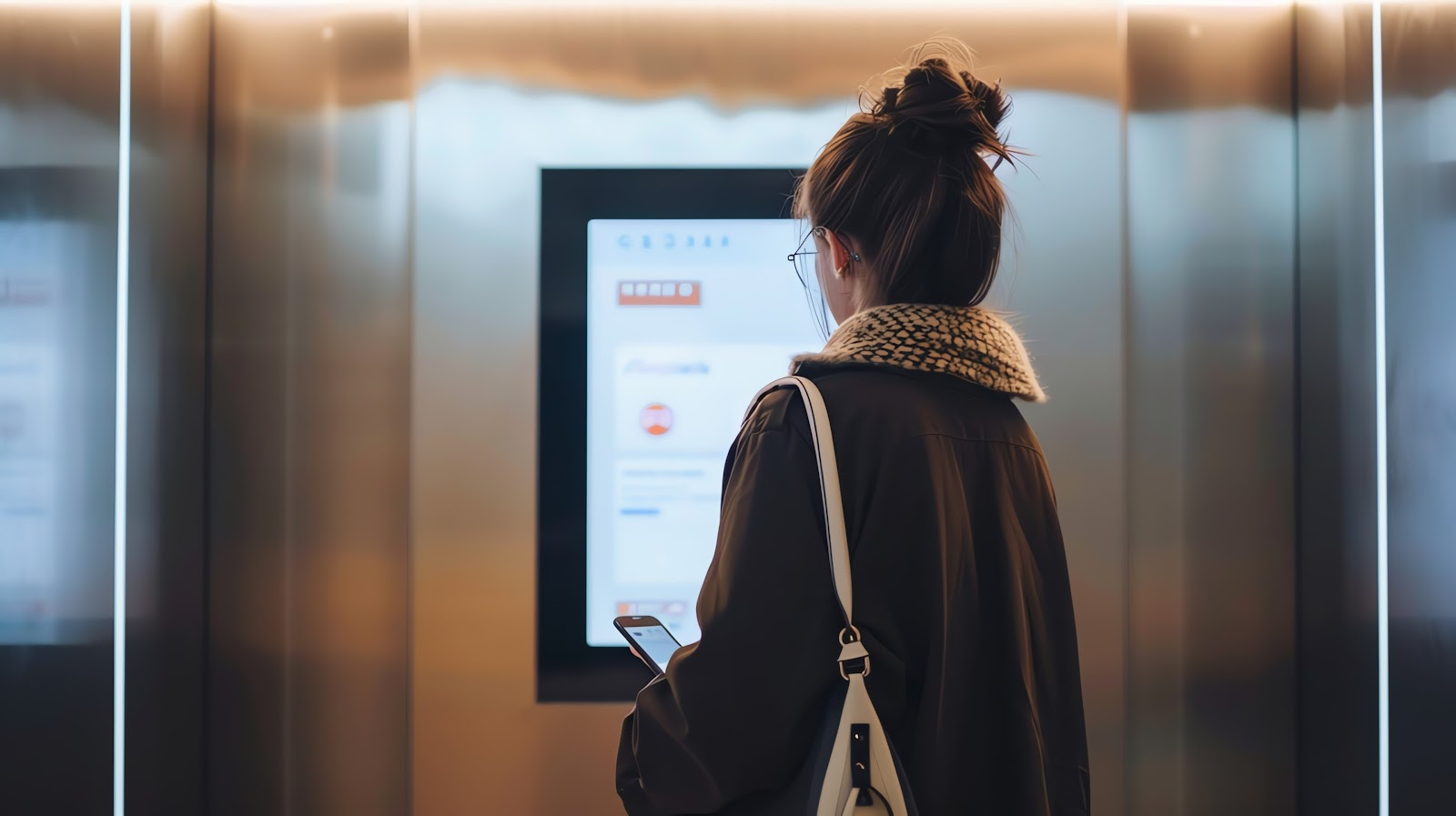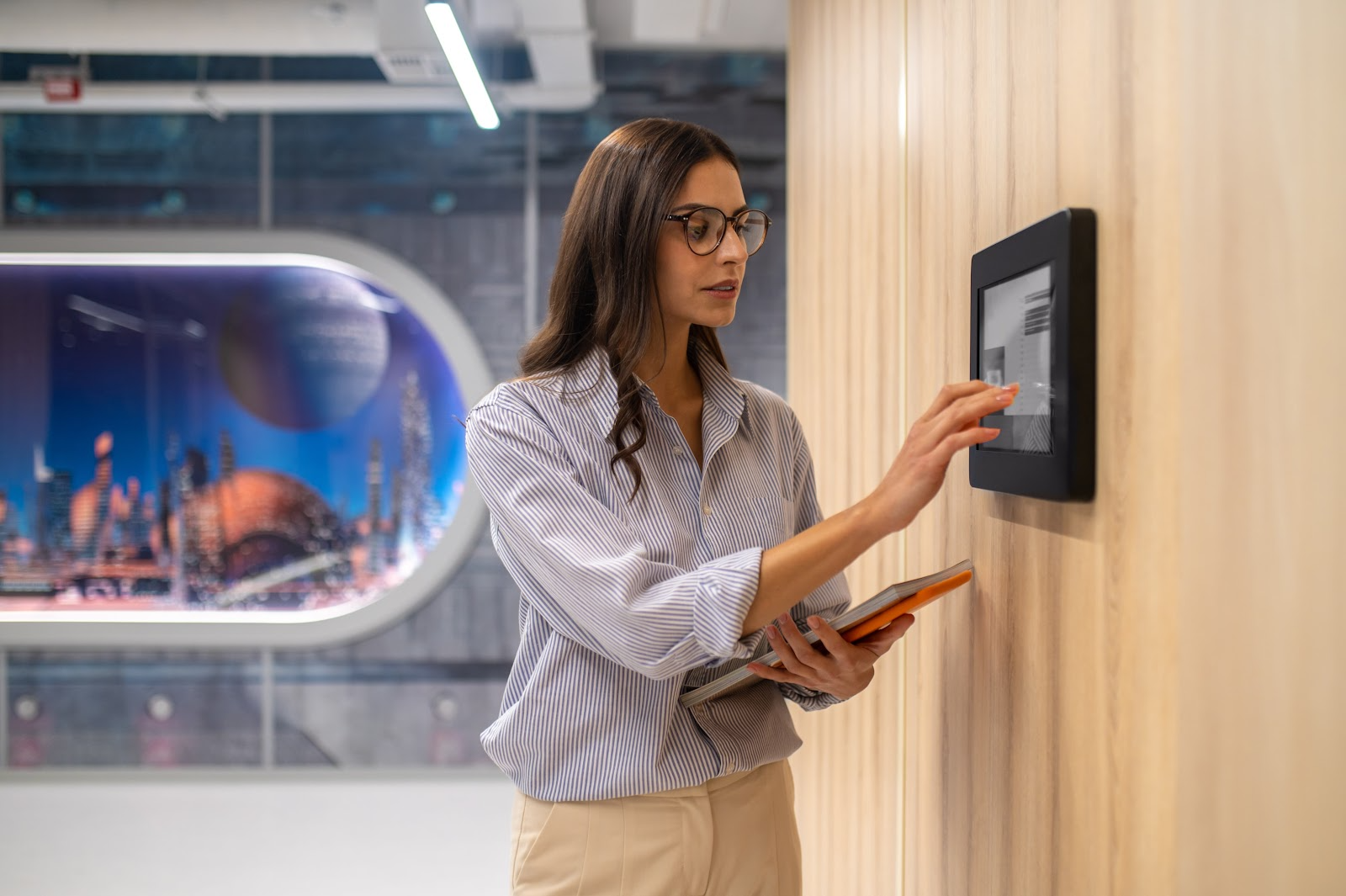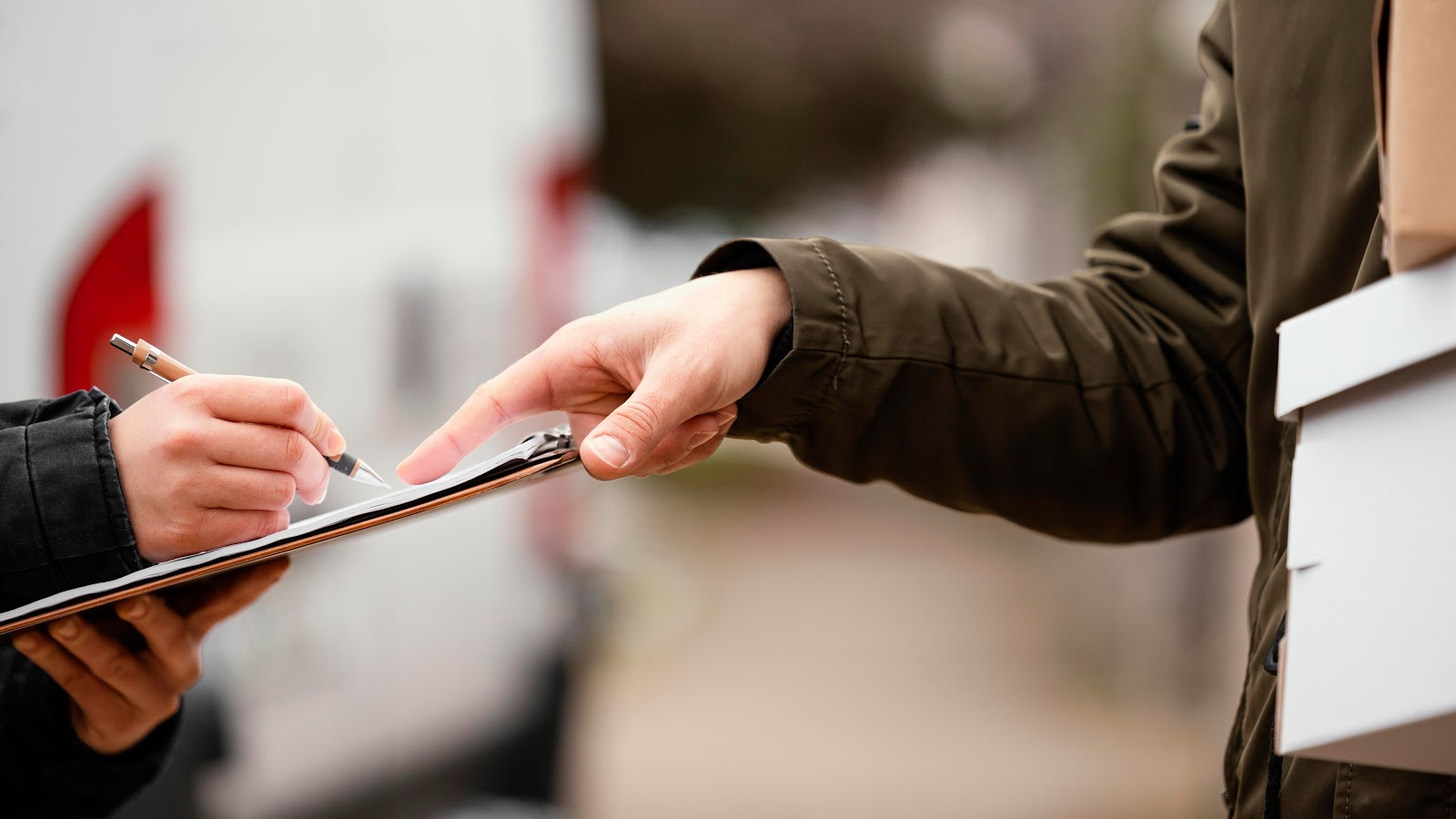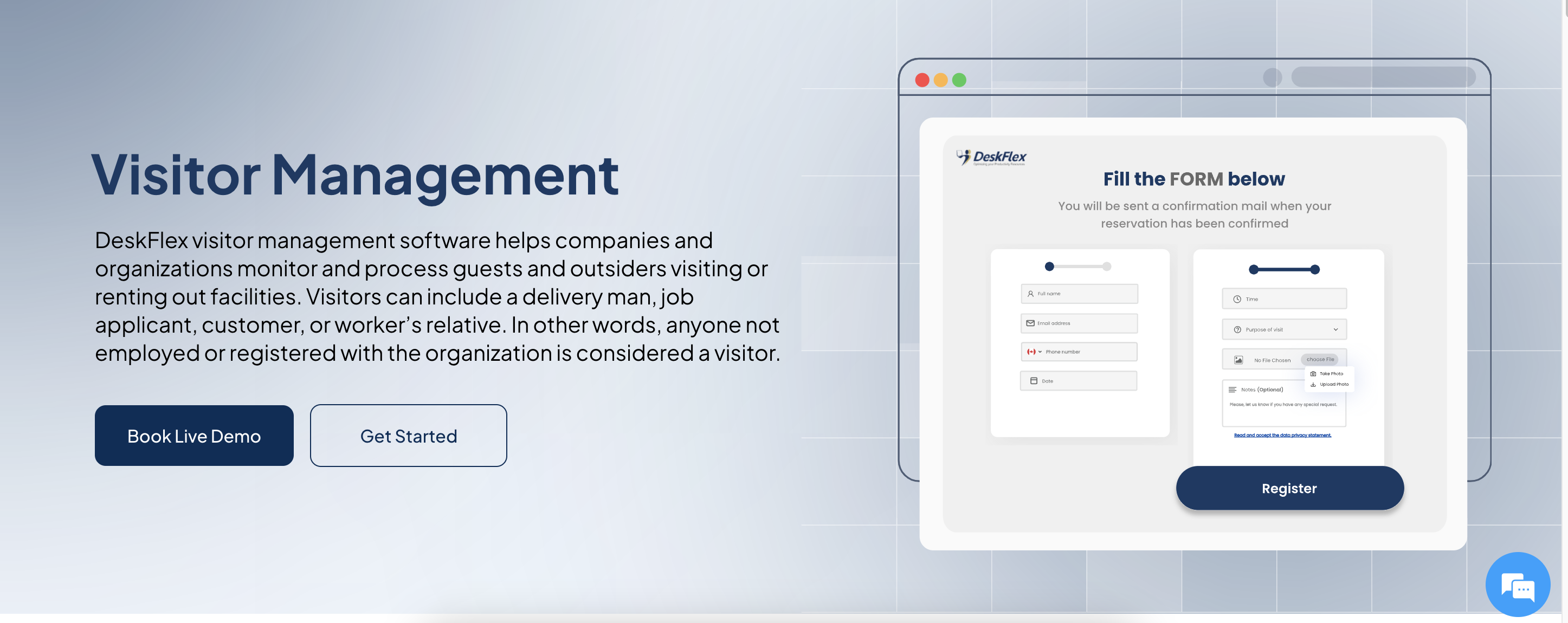
Complete Guide to Visitor Management Software
From top to bottom, businesses want to run like clockwork. To simplify operations and enhance security, businesses are increasingly turning to visitor management software.
From securing office spaces to providing an efficient visitor check-in experience, a robust visitor management system is essential to keeping a workplace that is orderly and safe.
In this article, we will uncover the components of visitor management software and how it improves business security, operational efficiency, and visitor experiences.
What is Visitor Management Software?
Visitor management software is a tool businesses use to keep track of people who enter their facilities. Whether it’s customers, contractors, delivery personnel, or guests, this software helps streamline the check-in process and ensures that everyone on the premises is accounted for.
Instead of relying on old-fashioned paper sign-in sheets, visitor management systems offer a more modern approach. It automates tasks like logging arrivals, printing visitor badges, and notifying staff members when their guest arrives.
Many systems also include features such as pre-registration, which lets visitors fill in their details before arriving. This saves time at the front desk.
The software isn’t just for tracking visitor flow. It plays a big role in security by ensuring that only authorized individuals can access the building. Some systems even integrate with ID scanners, background checks, and facial recognition for added protection.
It also helps businesses stay compliant with safety regulations. In the event of an emergency, administrators can use the software to see who’s inside the building, making evacuation or lockdown procedures more efficient.
Key Features of a Visitor Management System
A robust visitor management system should offer these features:
Visitor Registration
Modern visitor management systems streamline the visitor registration process, allowing visitors to sign in using QR codes, touchless sign-in apps, or kiosks.
With the electronic check-in, visitors zip through the process, and paper logs become a thing of the past, freeing up staff to focus on more pressing tasks.
Access Control
Integration with access control systems is vital for regulating entry. The moment you assign distinct access credentials, you’re essentially creating a secure map of your business, guiding visitors to authorized zones and preventing unauthorized detours.
Visitor Screening
Ensuring the safety of the premises involves pre-screening visitors for compliance. Visitor management software often includes features like background checks, safety acknowledgment forms, or health screenings (especially relevant post-COVID).
Before you can enter, our team runs a quick check to make sure you’re following the necessary health and security guidelines.
Cloud-Based Technology
Cloud-based visitor management systems offer scalability and accessibility, allowing businesses to store visitor data securely in the cloud.
Having all your data in one spot means you can get a handle on visitor traffic at multiple locations simultaneously, and make adjustments on the fly.
Automated Reporting & Analytics
A robust visitor management solution allows businesses to export visitor data for reporting and analysis. Automated reporting tools help monitor visitor patterns, enhance decision-making, and ensure compliance with security policies.
Visitor Badges & Branding
Customizable visitor badges are an essential part of any visitor management system.
Badges showcasing a company’s logo, visitor names, and access permissions serve a triple purpose: clear identification, a memorable visitor experience, and an opportunity to build a stronger brand connection.
These key features make a leading visitor management system crucial for improving operational efficiency, enhancing security, and ensuring compliance.
Why Visitor Management Is Crucial for Business Security
When it comes to business data security, a strong visitor management system is critical for preventing unauthorized access and protecting sensitive information.
1. Improving Security
A visitor management system is essential for protecting businesses from unauthorized access by meticulously tracking visitors’ sign in. With real-time monitoring, businesses know who is on-site at any moment, preventing potential security breaches.
Integrating access control systems adds an additional layer of security, as it restricts visitor access to sensitive areas.
2. Visitor Screening
A robust visitor management system provides visitor screening to ensure safety and compliance. Before visitors arrive, systems can monitor visitors, conduct background checks, and verify identities.
This is particularly useful for industries such as healthcare or government, where unauthorized access could lead to severe consequences.
Screening allows businesses to confirm visitor information before granting access, ensuring visitors arrive safely.
3. Monitoring Visitor Activity
Tracking visitors from check-in to check-out is critical for keeping a detailed log of movements on-site. A visitor management solution helps businesses monitor visitor activity in real time, offering insights into visitor patterns.
For industries dealing with sensitive information, such as healthcare, having a real time visibility into visitor activity ensures that visitor behavior aligns with company policies.
4. Legal Compliance
Ensuring legal compliance requires businesses to keep accurate visitor records. These records are critical for ensuring that businesses comply with local regulations, such as visitor data retention laws, and protect them from potential liabilities.
Accurate records of visitor interactions, such as visitor badges and visitor registration, are valuable for audits and legal needs.
5. Data Security
A visitor management system works to ensure that sensitive visitor data is securely stored. Modern visitor management technology includes strong encryption protocols, assuring that visitor records are stored in a way that complies with data protection regulations like GDPR.
Security personnel can access visitor data safely without compromising privacy, offering a digital solution that maintains the highest security standards.
Common Use Cases for Visitor Management Solutions
A visitor management system is versatile and adaptable, which makes it suitable for a wide variety of industries.
Each industry has unique needs when it comes to managing visitors, whether it’s for security, compliance, or improving the visitor experience.
Below are some of the most common use cases for visitor management solutions across different sectors.
Corporate Offices
Visitor management systems are essential for managing the high volume of daily visitors, including clients, job candidates, and delivery personnel.
The ability to track and monitor visitor activity helps corporate offices maintain security while ensuring a smooth check-in process.
- Clients and business partners: Many corporate offices deal with regular meetings with clients or business partners. A visitor management system allows for easy pre-registration, reducing wait times at the reception.
- Job candidates: For HR departments, visitor management systems can streamline the process of handling job candidates. Visitors can check in via self-service kiosks or mobile apps, and the system can provide candidates with temporary access to interview rooms.
- Delivery personnel: Frequent deliveries can sometimes disrupt the front desk’s efficiency. With a visitor management solution, delivery personnel can sign in quickly using a QR code or sign-in app, keeping the process organized and secure.
Healthcare Facilities
In healthcare environments, managing visitors is crucial to maintaining safety and compliance with health regulations.
Visitor management systems ensure that only authorized personnel and visitors have access to certain areas, helping protect patients and staff.
- Visitor screening: Healthcare facilities often implement visitor screening protocols as part of their visitor management processes. This includes collecting health information, such as recent travel history or contact with infectious diseases.
- Restricted access: For areas like intensive care units (ICU) or operating rooms, visitor management systems integrate with access control systems to restrict entry to authorized personnel. Visitors receive temporary badges with limited access based on the specific areas they can visit.
- Compliance and safety protocols: Hospitals and clinics must comply with various safety and legal regulations. A visitor management solution helps ensure compliance by automatically recording visitor details and generating reports for audits or safety reviews.
Educational Institutions
Schools, colleges, and universities also benefit from visitor management technology. These environments often have high volumes of visitors, such as parents, contractors, and external staff.
- Parent and guardian visits: Whether it’s for parent-teacher meetings or campus tours, visitor management systems streamline the check-in process for parents. Pre-registration options allow parents to sign in ahead of time, and visitor badges can be printed instantly upon arrival.
- Contractors and maintenance workers: Educational institutions frequently work with external contractors for facility maintenance. By using a visitor management solution, schools can ensure that contractors are logged in, tracked, and granted access only to the areas they need to service.
- External staff: Schools often host external teaching staff or guest speakers. Visitor management systems ensure that these individuals are registered and monitored during their time on campus.
Government Buildings
Government facilities handle sensitive information and must maintain tight security for visitors. A visitor management system can improve security by integrating with advanced control systems, ensuring that only authorized visitors are allowed into restricted areas.
- Sensitive access: Government buildings often deal with classified information or sensitive meetings. A visitor management system can ensure that all visitors are screened before being granted access.
- High-level security monitoring: Government buildings require high levels of security monitoring, and visitor management systems play a key role in this. Security personnel can monitor visitor activity in real time, tracking movement throughout the facility.
- Compliance with legal requirements: Government agencies often need to maintain strict visitor logs for audit and compliance purposes. The automated reporting and data collection capabilities of a visitor management system help to streamline this process, ensuring that all visitor information is accurately recorded and stored securely.
Comparing Visitor Management Systems vs Traditional Methods
Many organizations are transitioning from traditional visitor tracking methods, such as paper sign-in sheets, to more modern visitor management software.
Here is a comparison of visitor management systems and traditional methods to highlight the advantages of going digital:
Efficiency
Traditional visitor sign-in methods often involve paper sign-in sheets, where visitors are required to manually write down their information. While this method has been used for decades, it presents several limitations in terms of efficiency.
With traditional methods, visitors must spend time filling out forms, which can lead to long wait times, especially during busy periods. In addition, front desk staff must often manage these sheets, inputting data manually or keeping paper logs.
A visitor management system automates the entire process, allowing visitors to sign in using self-service kiosks, QR codes, or sign-in apps. This reduces wait times and frees up front desk staff to focus on other tasks.
Accuracy
One of the major drawbacks of traditional visitor management is the lack of accurate, reliable visitor records. Paper logs can be messy, incomplete, or illegible, leading to inaccurate data and difficulty in keeping track of who is on-site.
Handwritten entries are prone to errors, such as misspelled names, incomplete information, or incorrect entry times. Over time, maintaining and organizing paper records becomes a cumbersome task, especially for businesses that experience a high volume of visitors.
With a robust visitor management system, visitor data is captured accurately and stored securely in a digital format.
Security
Security is a primary concern for any organization, especially when managing external visitors. Traditional sign-in methods often fall short in terms of providing the level of security that modern businesses need.
Paper sign-in sheets offer very little in terms of security. Visitors can easily falsify their information, and there’s no way to control where they go after signing in.
In contrast, a visitor management system integrates with access control systems to provide enhanced security. Visitors are issued temporary badges that allow them access to specific areas of the building, and their movements can be tracked in real time.
Cost Savings
While traditional visitor management methods may seem inexpensive upfront, they often come with hidden costs, particularly related to staff time and operational inefficiencies.
Maintaining paper logs requires significant manual effort. Front desk staff must spend time collecting, organizing, and sometimes inputting data from paper sheets into a digital format for reporting purposes.
With a visitor management system, businesses can reduce these manual tasks. The system automatically collects, stores, and organizes visitor data, allowing staff to focus on more important duties.
Transform the Visitor Experience with DeskFlex
DeskFlex’s visitor management system helps businesses manage guest check-ins efficiently while improving security. It simplifies the sign-in process by allowing visitors to register through kiosks or pre-register online. This reduces wait times and ensures a smooth arrival experience.
The system provides real-time tracking of visitors, giving companies a clear view of who is on the premises at any moment. DeskFlex also integrates with access control systems, ensuring only authorized individuals can enter secure areas.
Visitors can receive temporary badges, and staff members are automatically notified upon their guest’s arrival.
DeskFlex’s solution supports compliance with safety protocols by maintaining a detailed visitor log. In emergencies, this information can be crucial for managing evacuations effectively.
Whether it’s a small office or a large enterprise, DeskFlex’s visitor management system scales to meet diverse requirements, combining convenience, security, and compliance in one tool.
Book a demo with DeskFlex today and discover how it can meet your unique needs.
FAQs About Visitor Management Software
What is visitor management software?
Visitor management software is a digital tool designed to streamline and automate the process of tracking and managing visitors when they arrive at a business location. It replaces traditional sign-in methods, offering features like visitor registration, access control, and real-time monitoring to enhance security and operational efficiency.
What is an example of a visitor management system?
DeskFlex is an example of a visitor management system that provides a comprehensive solution, including pre-registration, touchless check-ins, real-time visitor tracking, and integration with access control systems to enhance security and improve the visitor experience.
How much does a visitor management system cost?
The cost of a visitor management system varies depending on the features and scalability required. Basic systems may start at a low monthly subscription, while more advanced systems with additional features like real-time tracking, access control integration, and cloud-based services will cost more.
What is a visitor management system?
A VMS (Visitor Management System) is a software platform used to manage, track, and monitor visitors at a business location. It automates the check-in process, screens visitors, and improves overall security by integrating features like visitor badges, real-time monitoring, and access control.



















































